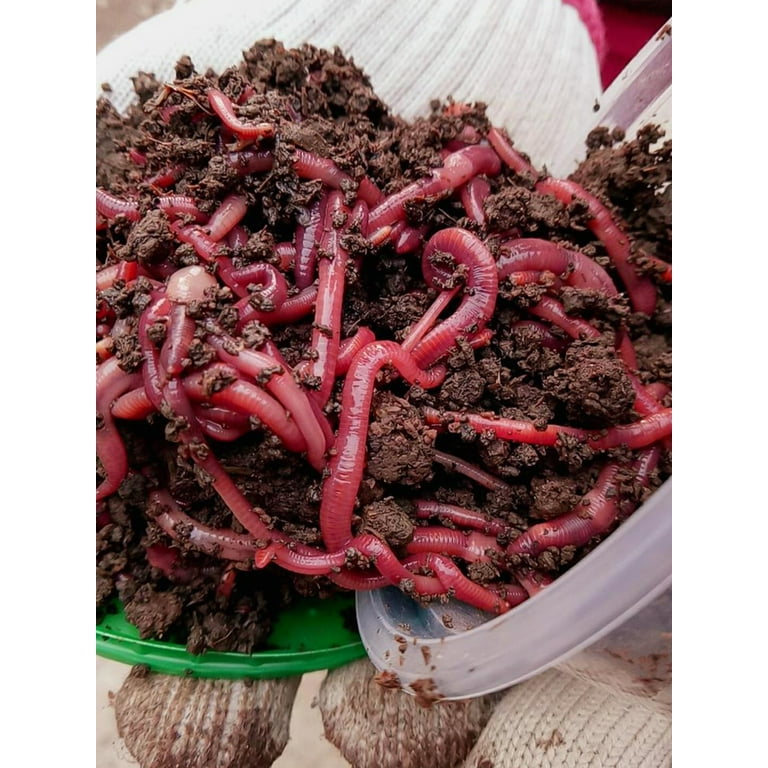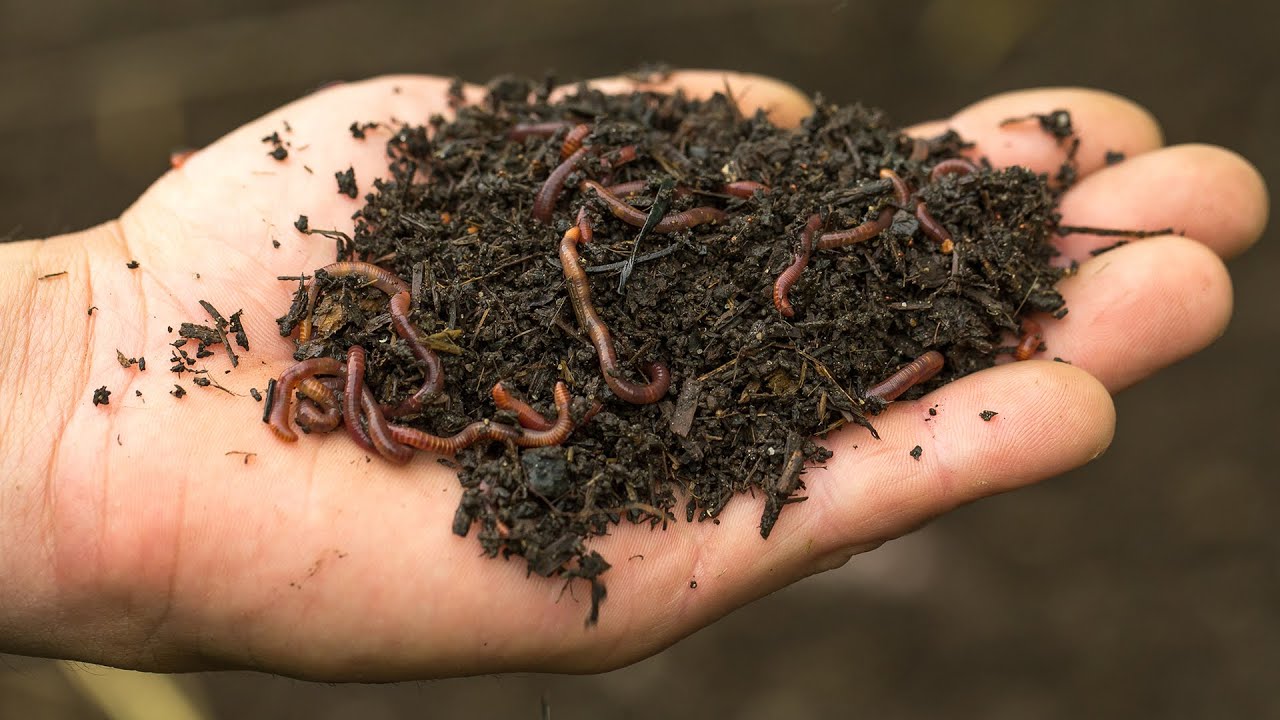Understanding the Advantages of Red Wiggler Composting: Just How This Effective Technique Changes Organic Waste Into Nutrient-Rich Dirt Modifications
Red Wiggler composting, employing the species Eisenia fetida, provides a compelling strategy to natural waste administration, transforming kitchen scraps and yard particles right into important soil changes. This method not only enhances dirt fertility yet likewise addresses pushing ecological concerns, including garbage dump waste reduction and greenhouse gas discharges.
What Are Red Wigglers?
Red wigglers, medically called Eisenia fetida, are a varieties of earthworm that play a crucial role in vermicomposting systems. These worms are identified by their reddish-brown shade, segmented bodies, and a distinct capacity to flourish in organic-rich environments, making them ideal for composting applications - Red Wiggler Composting. Unlike their garden-dwelling equivalents, red wigglers choose to inhabit the top layers of soil, where decomposing issue is abundant
Generally measuring between 3 to 4 inches in length, red wigglers have a high reproductive rate, allowing them to increase swiftly under ideal problems. They possess an unique digestion system that enables them to refine organic waste effectively, transforming it into nutrient-rich spreadings, which are extremely advantageous for plant growth.
Their resistance to varying moisture degrees and temperature ranges further boosts their utility in vermicomposting arrangements, making them a popular option among composting lovers. Additionally, red wigglers are aerobic microorganisms, which necessitates a well-aerated composting atmosphere, making certain effective decay. Recognizing the biological traits and habits of red wigglers is essential for enhancing their use in lasting waste management practices.

Advantages of Vermicomposting
Using the power of vermicomposting offers a plethora of farming and environmental advantages. It substantially lowers natural waste in garbage dumps, thus decreasing methane exhausts, a potent greenhouse gas. By diverting food scraps and backyard waste to vermicomposting, we support a more sustainable waste administration system.
Additionally, vermicomposting enhances dirt health and wellness. The castings produced by red wigglers are abundant in important nutrients, germs, and enzymes, enhancing soil structure and fertility. This nutrient-rich modification promotes robust plant development and enhances water retention, decreasing the requirement for chemical fertilizers.
Furthermore, vermicomposting fosters biodiversity in the dirt community. The introduction of helpful microorganisms from worm castings help in illness reductions and nutrient cycling, developing a much healthier atmosphere for plants.
Financially, vermicomposting minimizes the costs linked with chemical inputs and waste disposal. Gardeners and farmers can cultivate high-quality fruit and vegetables at reduced expenses, adding to food safety and sustainability.
Just How to Start Composting
Beginning a composting endeavor can be a rewarding and uncomplicated process. This will certainly help preserve a balanced temperature, essential for the composting procedure.
Collect natural materials such as cooking area scraps, yard waste, and shredded paper. Goal for a balanced mix of 'eco-friendly' materials, high in nitrogen (e.g., fruit scraps, coffee grounds), and 'brown' products, rich in carbon (e.g., dried leaves, cardboard) A ratio of about 2:1 environment-friendly to brown materials is excellent.
Begin layering your materials, making sure sufficient air circulation by transforming the pile consistently. This promotes cardiovascular disintegration, speeding and minimizing smells up the procedure. Monitor dampness degrees; the compost should seem like a wet sponge but not excessively wet.
Nutrient Account of Vermicompost
Composting, specifically with red wigglers, generates a nutrient-rich product called vermicompost. This natural amendment is distinguished by its high focus of vital nutrients, making it a very useful resource for gardening and farming. Vermicompost usually contains elevated levels of macronutrients such as potassium, nitrogen, and phosphorus, which are crucial for plant growth. In addition, it provides micronutrients like calcium, iron, and magnesium, promoting robust plant advancement and improving soil health and wellness.
The microbial activity present in vermicompost further enriches its account, presenting useful germs and fungis that promote vitamins and mineral availability and uptake in plants. This biological element aids in reducing plant diseases and improving soil framework, leading to enhanced water retention and oygenation.

Environmental Influence of Composting
The ecological effect of composting, specifically through making use of red wigglers, is diverse and extensive. This approach have a peek here significantly reduces the quantity of natural waste sent to land fills, which subsequently minimizes greenhouse gas emissions, especially methane-- a potent factor to environment adjustment. By drawing away natural products from landfills, red wiggler composting not just aids minimize environmental degradation however additionally advertises lasting waste management techniques.

Moreover, composting adds to carbon sequestration, as the process records carbon dioxide from the atmosphere and shops it in the soil. This all-natural procedure aids in combating environment modification while enhancing the dirt - Red Wiggler Composting. In general, red wiggler composting presents a sensible, environment-friendly service for waste monitoring and environmental sustainability, promoting much healthier communities and a more lasting future
Verdict
In verdict, Red Wiggler composting offers as a reliable method for converting natural waste right into beneficial soil modifications. The process not just enhances dirt fertility and framework but likewise mitigates environmental problems associated with waste go right here disposal.
Red Wiggler composting, using the types Eisenia fetida, presents an engaging approach to natural waste administration, converting kitchen area scraps and backyard particles into important soil amendments. Unlike their garden-dwelling equivalents, red wigglers like to populate the upper layers of dirt, where decomposing matter is abundant.
The spreadings generated by red wigglers are abundant in vital nutrients, microorganisms, and enzymes, improving dirt framework and fertility. The nutrient-rich by-products of red wiggler task boost soil framework, increase water retention, and advertise biodiversity within the dirt ecological community.In verdict, Red Wiggler composting offers as an efficient approach for converting organic waste into beneficial dirt modifications.